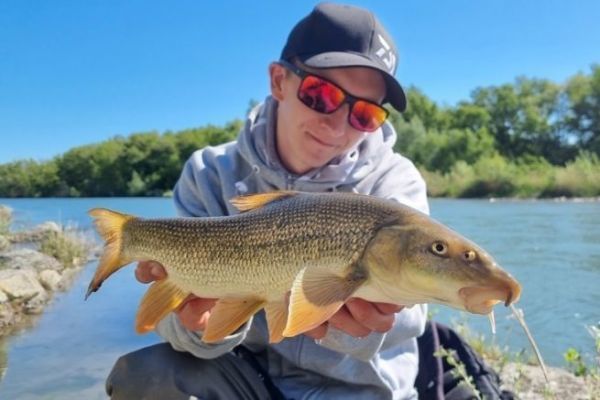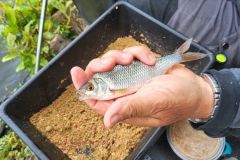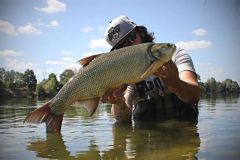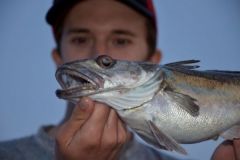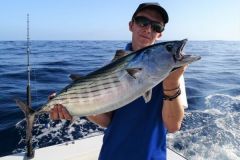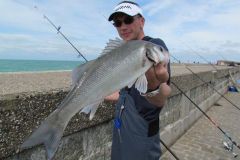Recommended equipment
A powerful feeder rod is recommended for barbel fishing. Choose a special "barbel feeder" rod from 3.60 m to 4.20 m, with a strong blank capable of bridling powerful fish and casting heavy feeders (40 to 100 g).
Choose a sturdy 4000- or 5000-size reel with a progressive brake and a good line reserve (20 to 24 hundredths), as barbel deliver violent rushes.
A sturdy leader is needed to take on the prettiest barbel. Fluorocarbon or strong nylon, from 0.18 to 0.25 mm, often between 60 cm and 1.80 m long, depending on the clarity of the water and the strength of the current.
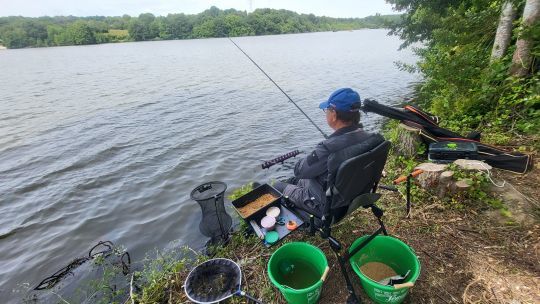
Installation and priming
A self-locking loop is recommended. Widely used to increase efficiency, the loop allows immediate detection of the bite and makes the fish hook itself as soon as it moves the feeder.
The use of feeders adapted to the different situations encountered will increase efficiency. Use open or closed cage feeders, depending on the type of groundbait (pellets/chenevis or maggots). The weight will depend on the current. Choose sturdy feeders that respect the bottom.
As for the bait, mix a barbel bait (rich, sticky, with meaty aromas) with attractive particles: pellets (2-6 mm), hemp seeds, corn, mini-boilies, casters... Tighten the mixture well so that it resists casting and the bait reaches the bottom without dispersing too quickly.
Gaining in efficiency
- Maggots: a bunch of 5 to 8 maggots on a strong iron hook is very attractive, but sometimes also attracts bream and roach.
- Halibut pellets, meaty mini-boilies, sweetcorn, even shrimp on hooks or mounted on hair.
- Hair/maggot clipâeuros¯: to catch larger individuals and improve the presentation of the appât.
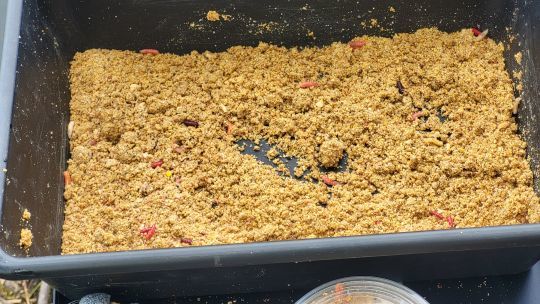
Actions and strategies on the fishing station
To find barbel, you first need to target the right spots: pools, head and foot of current, obstacle zones (but watch out for snags!).
The rhythm of casting and priming must be regular to be effective. So cast frequently, every 5 to 10 minutes. This rhythm maintains underwater activity and keeps the barbel in the area.
Next, you need to manage the fight. Hold the rod high to control powerful starts and prevent the barbel from taking refuge in blocks or nearby branches.
Remember to check your leader and hook regularly because of the rubbing and risks associated with this combative fish.
Specific advice
The search for barbel is a prospecting fishery and requires patience. Fish can be wary or inactive. Change your leader length, vary your baits and move around if necessary to increase your chances of catching them.
To cover more ground, limit your equipment to the essentials and adapt quickly to course conditions.
After capture, allow the barbel to reoxygenate by holding it facing the current before releasing it.
Feeder fishing for barbel requires sturdy equipment, regular damping with particle-rich groundbait, suitable baits, reliable rigs and a dynamic positioning strategy. Patience, adaptability and reactivity are essential to seduce this powerful and cunning river fish.

 /
/ 